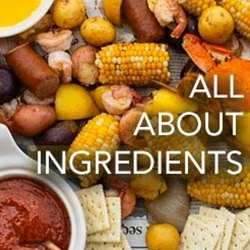All About Ingredients

The difference between a delicious meal and an okay one comes mostly from the ingredients you are using. Even a professional chef is only as good as the ingredients they are cooking with. When food is fresh and perfectly ripe, it is at its highest in nutritional value and best-tasting. Learning how to build flavors and produce incredible food is as much a learned instinct as it is reading recipes. Selecting the best ingredients for the creation process doesn't have to be hard, and neither does learning about how they interact. Start with something small and familiar and work around changes that you want to see. If you love making caramels but feel like they are missing something, add a pinch of salt. If you want to make a pasta sauce thicker and heartier, take a ladle full of your cooked pasta water and add it to the sauce so the starches in the water can thicken it up. Learning even simple steps such as these will elevate your food to new levels of unbelievable flavor. You'll wonder why you didn't step outside of your familiar comfort zone sooner!
Vegetables
Understanding vegetables is crucial to creating delicious meals. Vegetables taste okay raw, but when using a variety of methods for cooking them, you discover that they can have a multitude of flavors and dimensions. Building flavors with spices alone isn't possible. You must master cooking skills, too! This means developing a good understanding of your ingredients and your tools. Vegetables are perfect for experimenting.
Fruits
Fruits aren't just for sweets! Use them in a variety of recipes, from the sweetest to some of the most savory. Just think about your pineapple on ham or apples paired with pork- these pairs are a perfect match. Fruits are a more complex ingredient to use as they require a more nuanced understanding, but once you've got them down, you will really see a new world of flavors opening up!
Pumpkin or Apple: A History of Flavor
Meat
There are so many different flavor profiles that fall into the category of meat. From the blank slate of chicken or the intensely flavorful goose, meat is a category with a flavor that suits many consumers. Because of the level of protein, information about eggs is included in the meat category as well.
What Spices Go With What Meat?
The Difference Between Smoking, Barbecuing, and Grilling
Chicken
Starch
Often the base for staple foods in cuisines all over the world, starches encompass a wide number of foods we know and love. This includes some vegetables, grains, and pastas, and usually our favorite comfort foods. This category is one of the best for experimenting with, especially because they are almost all pretty neutral tasting. Think about a white vinegar on your French fries or a pat of butter on your favorite noodles, a sprinkle of salt just glistening on top of it all. Starches are a great place to learn about how foods react to one another.
Oils
A fat that can transform even the blandest meal into a deeply satisfying dish, oil is often painted as a bad guy in American media. Used sparingly, oil can form the base for some of your favorite dinners. Add it to stir fries, make your own pesto, or fry up some plantain chips in a hot, crackling pan of one of your favorite oils.
All Olive Oil is Not Created Equally
Plant-Based Diet Specific Ingredients
Even with so much attention being focused lately on plant-based eating, there still isn't a lot of understanding about picking a plant-based lifestyle that will align your needs. Here, we discuss everything from choosing a plant milk that fits your environmental consciousness to the pros and cons of the GMO crop industry.
Cuisine Basics
In this section, you will find basics for cuisines that may include all of the above-mentioned ingredients, dining habits, or just some generalized information about the food of a region. Learn more about how these cuisines have been influenced over time or discover how they have influenced American food culture!
American
Brazillian
Chinese
Indian
Japanese
Mexican
Spanish
Cretan
How Food Interacts
This section is dedicated to Samin Nosrat, a chef who has taught us so much about how food works together through both her brilliant book and wonderful Netflix series. If you haven't watched it yet, you should.

